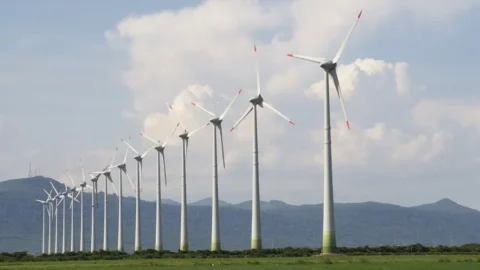Negative signals for the productive fabric of Lombardy, in particular for the exports of the industrial districts of the region which is the Italian locomotive: according to the data processed by the Intesa Sanpaolo Monitor, the exports of the traditional Lombard supply chains still show signs of contraction and in the period April-June 2019 recorded a trend variation of -3,3% at current values, quantifiable in around 262 million euros of exports less than in the second quarter of 2018. The result adds to the already negative result of the first quarter with a delay equal to -2,4% in the whole of the semester and a result that is lower than the national district average (+2,8%).
The Lombard performance is part of a picture of general economic slowdown and world trade. Furthermore, it should be noted that the comparison takes place with a 2018 which for the Lombard districts had been particularly brilliant in its opening. The mature markets, which up to the first quarter of 2019 showed positive export trend values, between April and June 2019 interrupt this trend (-2,0%; -0,6% overall in the first half).
It is confirmed a lag in the exports of the main mature countries neighbors (Germany -7,3% compared to the second quarter of 2018 and -4,8% compared to the first half of 2018; France -1,9% compared to the second quarter of 2018 and -2,0% compared to the first half of 2018; Switzerland - 10,4%, -6,3% on a half-year basis), not offset by the positive performance of the United States (+7,2% at trend values compared to the first quarter of 2018; +8,0% overall in the first half), Canada (+25,6% at trend values compared to the first quarter of 2018; +30,3% overall in the first half) and Japan (+17,8%, +8,0% on a half-yearly basis).
A further drop in the emerging markets in the April-June quarter (-5,3%, a percentage figure similar to that of the overall first half, where Turkey alone recorded -94 million). The negative result was also conditioned by the trend of exports to China (-8,9%, -8,2% on a half-yearly basis), Poland (-9,5%, -9,0% on a half-yearly basis), and Brazil (-20,8%, -9,0% on a half-yearly basis), not offset by good performance in Korea (+60,6%, +44,8% on a half-yearly basis) and Russia (+8,8%, +1,6% on a half-yearly basis). The analysis performed for individual districts shows nine realities (out of twenty-three monitored) with exports growing in the second quarter of 2019 in line with the performances recorded at the end of 2018 and the beginning of 2019.
Among the growing districts, three agri-food realities emerge: Brescian wines and spirits (+10,2% in the second quarter of 2019), the dairy products of south-eastern Lombardy (+6,0%) and the meats and cured meats of Cremona and Mantua (+4,8 %). The exports of three metalworking districts were also positive: Instrumental Mechanics of Milan and Monza (+4,0%), Instrumental Mechanics of Varese (+1,5%), Metalworking of the lower Mantua area (+1,2%) . Exports are also growing for the Casalasco-Viadanese wood district (+3,3%). To these must be added the Footwear of Vigevano (+3,5%) and the Textiles and Clothing of Val Seriana (+2,2%).
The other districts of the region, at the beginning of 2019, appear to be in more difficulty. Among these, Wood and furniture from Brianza (-1,0% the trend change in the second quarter) and within the fashion sector, Silk-textiles from Como (-5,4%), Clothing-textiles from Gallarate (-6,7%), the hosiery of Castel Goffredo (-10,2%). In some districts of the engineering and automotive industries, the slowdown of the German economy weighs heavily, which represents the main outlet market. Among the most unfavorable districts involved, Rubber of Sebino Bergamasco (-9,7%), Metalworking of Lecco (-7,0%), Metalli of Brescia (-8,3%) and Instrumental Mechanics of Bergamo (- -14%).
Followed by articles in rubber and plastic materials from Varese (-2,0%), taps, valves and pots and pans from Lumezzane (-3,6%) and instrumental mechanics from Brescia (-4,0%). In fact, these districts are very oriented towards sales to the German market and closed the second quarter of 2019, as well as the half year, with a negative result, unable to balance the lower sales to Germany with those to other outlet markets. Then they close the rice districts of Pavia are also down (-2,9%) and of machines for the processing and production of footwear in Vigevano (-16,1%).
È the picture relating to the second half of the year is very uncertain given that tensions on international markets remain very high. In a context that has become volatile and no longer one of widespread growth, it is highly probable that the trend of Italian and Lombard exports will continue to present a considerable dispersion of results. It will be essential for district businesses to be able to rapidly change their range of action according to the growth opportunities that may emerge in the various areas of the world and any closures and/or tensions present from time to time in the various commercial outlets.





